Posted on Dec 12, 2018
Defining Your Characters: 150+ Character Mannerisms
About the author
Reedsy's editorial team is a diverse group of industry experts devoted to helping authors write and publish beautiful books.
More about the Reedsy Editorial Team →Part of the magic of great fiction is its ability to let you see their characters in your mind’s eye. Think about Sherlock Holmes and you might picture him smoking a pipe, or stroking his chin in thought. Or Anne Shirley from Anne of the Green Gables, who might at any moment be gesturing enthusiastically and talking a mile a minute.
Much of this ability to conjure actors in this theatre of the mind comes from one simple trick in the character-building handbook: mannerisms. A well-observed tic or recurring behavior can unlock your characters and bring them to life in your audience’s imagination.
If you’re wondering how to start going about it, you’ve come to the right spot on the Internet. We’ve split this post into three parts: what character mannerisms exactly are, how to write them into your story, and a list of 150+ mannerisms for you in case you're running short on inspiration.
What are character mannerisms?
A mannerism is a gesture, speech pattern, or way of conduct that is characteristic of an individual. These “micro-behaviors” might range from an everyday movement (i.e. clearing the throat) to a very specific tic (i.e. biting nails when nervous). In literature, writers use mannerisms to help enhance physical depictions and put characters in motion on the page. Consider it another tool in your writer’s toolbox when it comes to character development and description.
Q: How can writers use stereotypes and tropes to their benefit when creating a character?
Suggested answer
Well, stereotypes and tropes exist because they are the comfort food of readers, and should be the comfort food of writers too. Not to the extent that you write cliche stories by overusing the same old thing. But by the fact that their presence in certain story types is expected and even desired by fans of that story type, so to try and write without them can leave readers unsatisfied and the story feeling incomplete. There are great books out there on this, John Truby in particular has a great one out. Knowing the stereotypes of a heroes journey, for example, gives you lots of options for side characters and supporting characters to help a hero on certain types of quests. The tropes are the expected encounters and obstacles that hero will encounter along the way. If you start by mapping these out and identifying which are required (tropes most of all) and which work best for your story but are optional (stereotype characters) then you can take them and twist them in unique and interesting ways, even flip them around in timeline or approach in ways that make it clear they are there (and meet reader expectations and preferences) while still avoiding cliche expectation and creating interesting and unique characters, world, and stories that captivate readers.
Bryan thomas is available to hire on Reedsy ⏺
There is a common misconception within writing circles that "trope" = bad or cliche. While yes, certain tropes and character traits can become overused and cliche, tropes are more like reader expectations when they pick up a book from a certain genre. For instance:
- In romance, tropes are things like friends to lovers, enemies-to-lovers, he falls first, grumpy neighbor
- In YA fantasy, tropes can be things like the Chosen One, Love Triangles, or Hidden Magic
- In middle grade, tropes can be the power of friendship, magical animals, magical academies
While not all books in these genres include all of these things, and while these things can certainly be cliche if you don't put your unique take on it, they are what readers enjoy about a genre. After all, isn't that why you read a certain genre, because there are tropes and elements within that you enjoy?
The way to use these stereotypes and tropes to your benefit is to use them as a framework, understanding how they operate and why readers enjoy them. Then, sprinkle your unique author magic on them. How you describe characters, the dynamic between two characters, how certain elements show up or are utilized, all these can be unique to you and your book. You're not looking to reinvent the wheel, but rather give it a new coat of paint, your coat of paint, so that you write the story you want while delivering a satisfying reader experience.
Sean is available to hire on Reedsy ⏺
Character mannerisms are one way in which writers can show, not tell. (This is an old writing adage — if you’d to learn more about it, go here for a complete guide). Here’s an example of the difference it might make:
- Telling: “Why did you just stab me with a toothpick?” cried Matt, surprised.
- Showing: “Why,” cried Matt, blinking rapidly, “did you just stab me with a toothpick?”
However, it’s important not to overdo it and bring up a certain quirk time and time again. Let’s talk a bit about some best practices that may be helpful when it comes to writing character mannerisms into a story.
Note: Character mannerisms differ from quirks in that they are behavioral (e.g. a character might have the tendency to bite their nails when anxious), as opposed to parts of their personality (e.g. they love to wear cow prints). You can learn more about quirks here.
How to write mannerisms in a story
Pro-tip: Don’t tell a reader that your character is stroking his mustache every four pages. Here’s how to make your character’s mannerisms slot seamlessly into a story.

NEW REEDSY COURSE
How to Write a Novel
Enroll in our course and become an author in three months.
Make the movement fit
Most importantly, a mannerism has to make sense in the context of the story. When you’re thinking about your character’s idiosyncrasy, consider:
- The personality of the character;
- The environment of the scene; and
- The era in which the story takes place.
How does a character’s background impact the way that they move? How might the era and setting influence their actions? An Iranian man, for instance, wouldn’t use the thumbs-up gesture anywhere in the world — unless he wanted to insult someone. Then there’s the hero from the 19th-century, who would fiddle with his pocket watch, as men didn’t start regularly wearing wristwatches until the early 20th century.
If you get it right, a character’s mannerisms can speak volumes. J.K. Rowling, for example, employed mannerisms to great effect with Newt Scamander from Fantastic Beasts and Where to Find Them. He hunches, tilts his head down, and goes out of his way to avoid eye contact — conveying to the audience that he’s shy, awkward, and non-threatening. Meanwhile, Captain Jack Sparrow from Pirates of the Caribbean sways even when he’s standing, stumbles over nothing, and slurs: in other words, he’s a drunk pirate, through and through.

Make it add to the story, not distract
Don’t tack on an odd behavior just to up your daily word count. Mannerisms should add to your story — not distract from it. You must be able to justify why you’re writing them into a given scene: whether it’s to reveal character, break up long sequences of dialogue, or advance the drama.
Most of all, nobody wants to read about a common physical movement, flip the page, and then read about it again. You’ll risk tiring or annoying your audience — not to mention that the forward thrust of your story will suffer as it’s bogged down by irrelevant descriptions of gestures.
So if you notice a character twirling their hair in each chapter, it’s probably time to hit the “Find” button and re-think it. As the adage probably goes, “Everything in moderation — including mannerisms.”
🖊️
Which contemporary author are you?
Find out which of today's greats is your writerly match. Takes one minute!
Don’t get too cliché
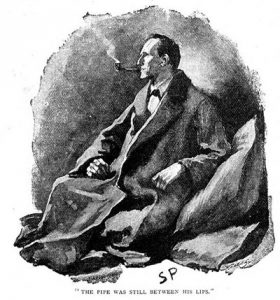 How often do you really wring your hands? Or stroke your chin when you’re deep in thought? Some mannerisms are generally overused in fiction. To go about it realistically, make sure that you don’t rely too much on these cliché gestures and movements.
How often do you really wring your hands? Or stroke your chin when you’re deep in thought? Some mannerisms are generally overused in fiction. To go about it realistically, make sure that you don’t rely too much on these cliché gestures and movements.
To think beyond the box, consider how you unconsciously act in certain situations. Yes, this might be tough, which is why we’ve also come up with a resource to help you out.
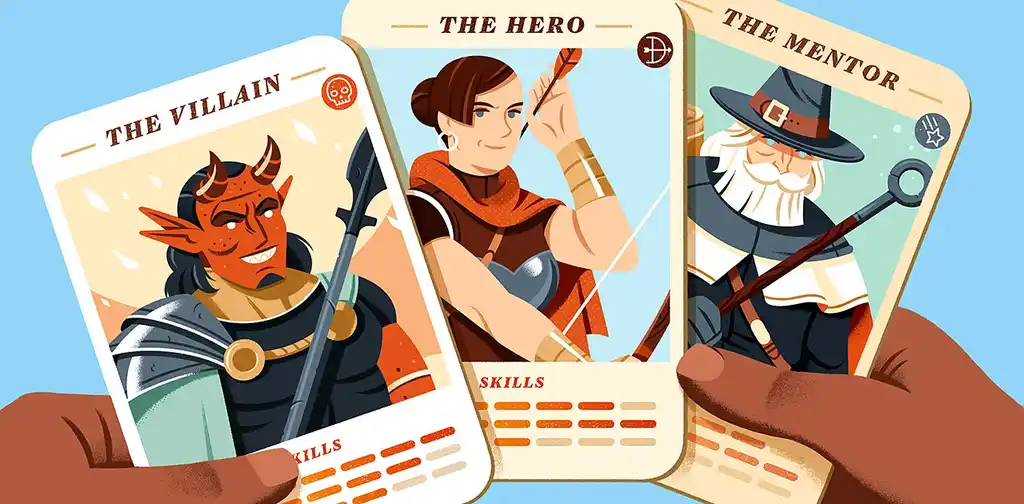
FREE RESOURCE
Reedsy’s Character Profile Template
A story is only as strong as its characters. Fill this out to develop yours.
The Ultimate List of 150+ Character Mannerisms
If you’re struggling to come up with mannerisms for your character, here are over 150 to give you a headstart.
Speech mannerisms
Or: how do your characters talk? What tics do they show in conversation or during a presentation?
While talking
- Uses a falling inflection
- Ends sentences with question marks
- Speaks in a whisper
- Always talks over others
- Tendency to mumble
- Slurs words, even when sober
- Has a sing-song speech pattern
- Shortness of breath from talking too fast
- Unnecessary or exaggerated throat clearing
- Deep breaths between every sentence
- Constantly swallowing when nervous
- Heavy reliance on buffer words: “Like,” “Um,” “Uh,” “Totally,” “Basically,” “You know”
Characteristic noises

- Whistling
- Humming
- Sighing
- Stuttering
- Coughing
- Scoffing
- Laughter to fill in uncomfortable silences
- Muttering to oneself
- Noisy breathing
- “Sorry”
- “Tsk”
- “God”
🎵
Tell us about your book, and we'll give you a writing playlist
It'll only take a minute!
Physical mannerisms
Or: how do your characters move? What characteristic things do they do when they’re sitting, standing, or walking?
Head
-
![]() Tilting head in thought
Tilting head in thought - Hair tossing
- Hair playing or twirling when flirting
- Head bobbing while listening to music
- Grinding teeth
- Scratching the head
- Flaring nostrils
- Rubbing the neck when embarrassed
- Raised eyebrows
- Head on the chin in resting position
- Jaw clenching in moments of tension
- Sweating excessively
- Quivering chin
- Jutted chin
- Nose twitching or wrinkling
Mouth
- Smacking lips in satisfaction
- Mouthing the lyrics of a song
- Licking the lips when nervous
- Sticking out the tongue while thinking
- Counting teeth with the tongue when distracted
- Biting the bottom lip
- Pulling at the bottom lip
- Biting the inside of the cheek
- Movement of the mouth: quivering, curling, pursed, twitching, tensed

FREE COURSE
How to Develop Characters
In 10 days, learn to develop complex characters readers will love.
Eyes
- Sideways glance
- Likes to wink
- Fluttering eyelids
- Tendency to look down one’s nose
- Eyes that dart everywhere
- Tendency to avoid eye contact
- Always breaking eye contact
- Prolonged eye contact in conversation
- Looking down at feet while walking
- Rapid blinking when lying
- Frequently gazes off into space
- Has a thousand-yard stare
- Furrowed or knitted brows
- Movement of the eyes: rolling, squinting, twitching
- Description of the eyes: wide, glassy, crossed, dilated, narrowed
Hands

- Movement of the index finger: pointing, jabbing downwards, stabbing in the air
- Snapping fingers
- Arms crossed over chest
- Pinching the bridge of the nose
- Rubbing the temple
- Steepled hands
- Standing with hands clasped behind back
- Biting fingernails
- Doodling absently
- Wiping clammy hands
- Tightly clenched hands
- Running a hand through the hair
- Rubbing the eyes
- Touching the nose
- Stroking chin in thought
- Standing with hands in pocket
- Picking or pinching at the flesh
- Tugging at ear
- Tracing scars without thinking
- Covering mouth with a hand when smiling
- Rubbing the tips of fingers together
- Hooking a thumb in pockets while standing
- Braiding hair automatically
- Covering mouth while chewing or laughing
- Passing a hand over the face when tired
- Flexing fingers
- Cracking knuckles
- Drumming fingers on a surface
- Wild gesturing while talking
- Twiddling thumbs
- Swinging arms back and forth when walking
Q: What are effective adjectives for describing characters, and when should each be used?
Suggested answer
My favourite from my writing has been "etiolated." It's a word that describes a seedling starved of sunlight - thin and pale and reaching up. It contains a lot of layers of imagery which were useful for describing a character at their lowest point.
Mairi is available to hire on Reedsy ⏺
Curious, rebellious. A character that doesn't quite "fit the mold" will usually be interesting to readers.
Melody is available to hire on Reedsy ⏺
Characters are best described through body language and dialogue. Avoid overusing adjectives and let your readers do some of the interpreting. There is no need to spell everything out for them. The best way to convey a character's personality is through action, dialogue and body language.
Eva maria is available to hire on Reedsy ⏺
Upper body
- Shrugging shoulders
- Dropping shoulders
- Swaying while standing
- Slouching, slumping posture
- Tight, drawn-in shoulders when sitting
- Broad stance when standing
Legs
- Crossing legs when sitting
- Foot drags while walking
- Foot stamping
- Foot tapping
- Legs will uncontrollably shake
- Strides quickly when walking
- Stands too close to others when talking
- Knees knocking against each other
- Rocking back and forth on heels
- Shifting weight from one foot to the other
- Pacing back and forth in a room
- Sitting, legs apart
- Bouncing leg up and down in a chair
Interactive mannerisms
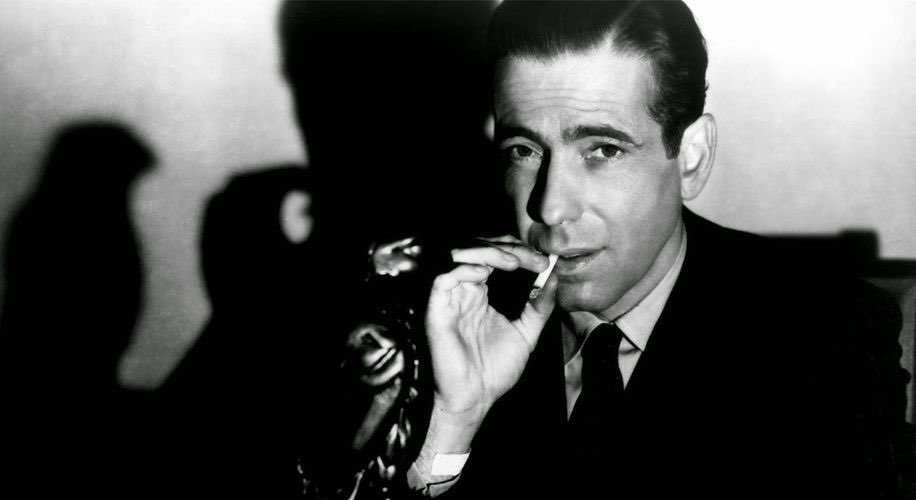
Or: how does your character interact with their surroundings and external objects?
- Taking glasses off and cleaning them
- Peering over glasses
- Adjusting or pushing up glasses
- Putting earpiece of glasses in mouth
- Has a cigarette perpetually dangling out of mouth
- Buttoning and unbuttoning coat with no purpose
- Always sitting on the very edge of chair
- Hands habitually on coat lapels
- Chewing the tip of a pen or pencil
- Jingling money in pockets
- Playing with the marker
- Tugging at pants before sitting
- Tearing at a napkin at the table
- Checking watch repeatedly
- Using a toothpick at all times
- Touching up makeup constantly
- Repeatedly checking cell phone
- Twirling a pencil at a desk
- Clicking a ballpoint pen open and close
- Playing with a Rubix Cube when bored
- Fiddling with earrings
- Shredding paper without thinking
- Peeling labels from bottles
- Bending paperclips in half
- Twisting the rings on fingers
- Tipping chair back
- Leaning against the wall while talking
- Tugging at collar of shirt when nervous
- Smacking gum
Q: What does it mean to create an “original” character in fiction?
Suggested answer
Original characters are those who are subverted stereotypes, who have things about them which are conflicting, who go against the grain in some way and who speak, think and react in ways that are not predictable.
Vanessa is available to hire on Reedsy ⏺
An original character feels and seems real and believable. They do not closely resemble a character that is well known in literature and have their own unique personality, desires, and set of circumstances.
Melody is available to hire on Reedsy ⏺
I think writing an original character just means that when a reader engages with that character, no other particular character comes to mind. Bit of a pithy answer, I know, but there you go. 😉
Brett is available to hire on Reedsy ⏺
Mannerisms are here to help
Ultimately, character mannerisms are only a small part of the bigger picture of character development. A character's mannerism should help reveal who they are, and that in and of itself will take some more work on your part. To understand your character on a deeper level, you can go here to download a free character profile template. Or if you’d like some character development exercises, here are eight of the best ones that you can use.
So whatever mannerisms you choose in the end, remember that it should tie into your character’s personality, background, and upbringing. If you follow that route, you won’t stray far from reaching your ultimate goal: the creation of a memorable character.
What memorable mannerisms and tics should be added to this list? Let us know in the comments below

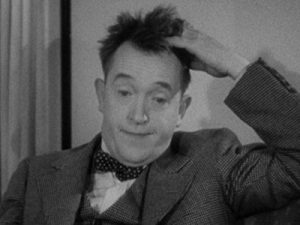 Tilting head in thought
Tilting head in thought
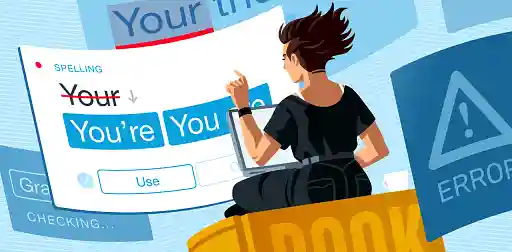

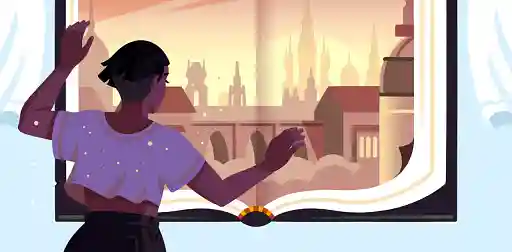
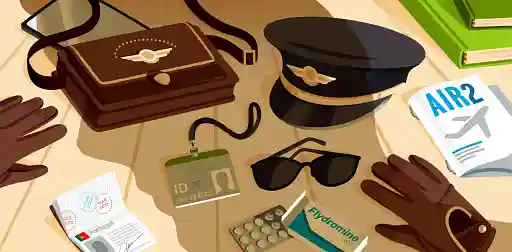
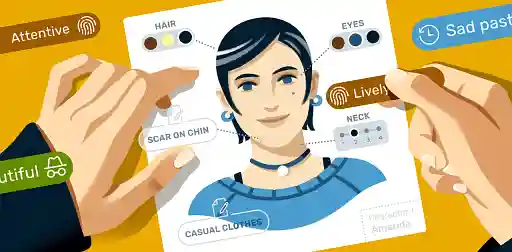


12 responses
Luke Henkel says:
08/05/2019 – 12:28
My character interestingly usually ends up standing against a doorframe, revealing his subconscious desire to always have an escape. You could also add: leaning head against windows/doors/glass panes when tired; squinting; crossing and uncrossing legs constantly; hands in lap without moving; prim straight back; and a character who is constantly cracking their neck from side to side.
↪️ Choco replied:
02/07/2019 – 19:08
Wow, that analysis you made about your character always standing against a doorframe was brilliant!
Katharina says:
08/08/2019 – 17:47
One of my characters always draws her sword when she sits down. She lays it across her lap and traces a rune that is embedded into the handle. It actually makes sense for her to do so, as she wants to be prepared for a fight at all times.
↪️ Taryn replied:
26/08/2019 – 00:06
Now that is brilliant!
Aminata says:
30/09/2019 – 03:10
You left out sucking the tongue with lower lips moving somewhat
↪️ Martin Cavannagh replied:
07/10/2019 – 15:42
Ooh, interesting. What would you say that suggests about the character?
Van says:
03/04/2020 – 23:33
My character chews on the inside of the side of her lower lip, and constantly clasps her hands in front of her so as to avoid over gesturing. Both are mannerisms that show she's working to maintain her control.
Dana says:
18/06/2020 – 18:22
My character likes to flick her fingers when she talks showing off one of her quirks: her bright and extremely unnecessary acrylic nails
Taylor says:
20/07/2020 – 16:42
My character never sits down in a place or with people she doesn't know, instead leaning on a wall or doorway, and whenever she is forced to sit, she always draws a dagger and traces the blade with her fingertip. You could also add crossing and uncrossing ankles continuously, clicking tongue, and picking at lips or fingernails.
Katie says:
22/07/2020 – 18:38
My character plays with her ring when she's nervous or anxious (her late father gave it to her as a gift so it reminds her of him and helps her feel safe).
Kate says:
07/08/2020 – 21:41
Reading this list, I realized how many tics I have. Constantly shifting weight, always sitting on the edge of my chair, mindlessly peeling labels from bottles, bouncing my leg while sitting, fast walking, swinging my arms as I walk, hooking my thumbs in my pockets, pulling on my lower lip with my teeth, biting my nails, snapping my fingers, covering my mouth while laughing and chewing. Oh my sweet goodness! Am I twitchy book character?
kathy says:
10/08/2020 – 21:02
My character obsessively curls her fingers around whatever is in her pockets because she's used to people trying to steal things from her. She also turns actions into little songs to stave off boredom and loneliness.